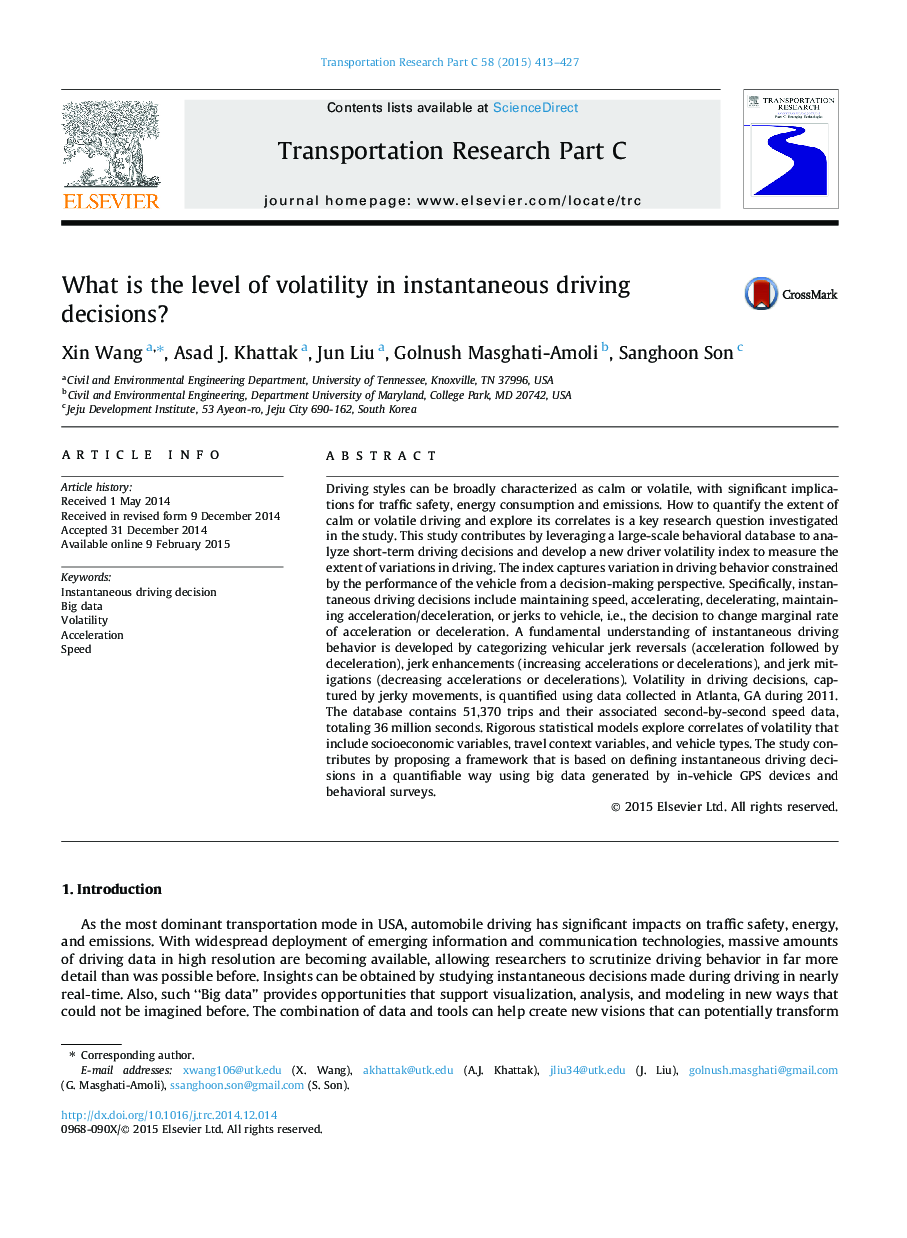| کد مقاله | کد نشریه | سال انتشار | مقاله انگلیسی | نسخه تمام متن |
|---|---|---|---|---|
| 524897 | 868868 | 2015 | 15 صفحه PDF | دانلود رایگان |
• Instantaneous driving behavior is categorized by vehicular jerk movements.
• Time spent on various instantaneous driving decision are identified and visualized.
• Volatility score is defined as percent of time driver jerks vehicle during a trip.
• Rigorous models are estimated to explore correlates of volatility.
• Volatility is handy to show regional driving profile and identify risk-prone driver.
Driving styles can be broadly characterized as calm or volatile, with significant implications for traffic safety, energy consumption and emissions. How to quantify the extent of calm or volatile driving and explore its correlates is a key research question investigated in the study. This study contributes by leveraging a large-scale behavioral database to analyze short-term driving decisions and develop a new driver volatility index to measure the extent of variations in driving. The index captures variation in driving behavior constrained by the performance of the vehicle from a decision-making perspective. Specifically, instantaneous driving decisions include maintaining speed, accelerating, decelerating, maintaining acceleration/deceleration, or jerks to vehicle, i.e., the decision to change marginal rate of acceleration or deceleration. A fundamental understanding of instantaneous driving behavior is developed by categorizing vehicular jerk reversals (acceleration followed by deceleration), jerk enhancements (increasing accelerations or decelerations), and jerk mitigations (decreasing accelerations or decelerations). Volatility in driving decisions, captured by jerky movements, is quantified using data collected in Atlanta, GA during 2011. The database contains 51,370 trips and their associated second-by-second speed data, totaling 36 million seconds. Rigorous statistical models explore correlates of volatility that include socioeconomic variables, travel context variables, and vehicle types. The study contributes by proposing a framework that is based on defining instantaneous driving decisions in a quantifiable way using big data generated by in-vehicle GPS devices and behavioral surveys.
Journal: Transportation Research Part C: Emerging Technologies - Volume 58, Part B, September 2015, Pages 413–427
